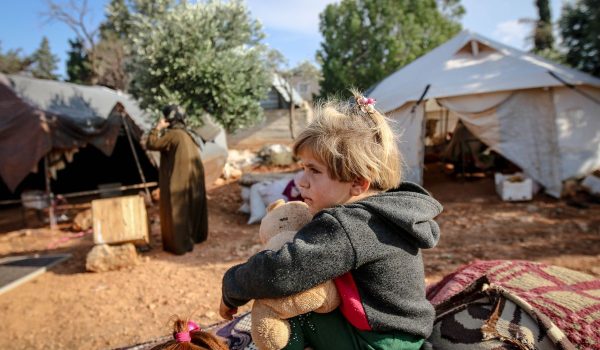In the middle of struggle and displacement, creativity still survives. Across refugee camps in Palestine and neighboring regions, hands continue to work—spinning wool, embroidering thread, carving olive wood. These crafts carry more than beauty. They carry memory, identity, and resilience. But many of these traditional skills are fading, with fewer young people learning them and fewer opportunities to pass them down.
Bringing these crafts back to life inside refugee camps isn’t just about art. It’s about preserving culture, building confidence, and creating new ways to earn a living. As more organizations and local communities invest in these traditions, they’re opening up space for healing and growth.
What This Article Talks About
- Why traditional crafts matter in Palestinian refugee communities
- The challenges of keeping heritage alive under displacement
- How craft revival programs support identity, healing, and income
- Stories of artisans passing down skills to younger generations
- What’s working—and what more can be done
More Than Just a Hobby
For generations, crafts like embroidery (tatreez), basket weaving, and wood carving have been part of daily life in Palestine. Each pattern, stitch, or object told a story. Women embroidered dresses with symbols from their village. Men carved religious items, tools, or toys out of olive wood. These weren’t just decorations. They were a way to express identity.
But in refugee camps, daily life often focuses on survival. Displacement, poverty, and restricted access to resources make it hard to keep these crafts going. Add to that modern pressures—cheaper factory-made goods and a younger generation pulled toward other types of work—and many traditional skills are at risk of disappearing.
Culture as a Form of Resistance
Reviving endangered crafts isn’t just about economic development. It’s also about resistance. Keeping culture alive in the face of displacement is an act of strength. In many camps, older artisans are teaching children and teens how to embroider or weave as a way to hold onto their roots.
For many young people, learning these crafts becomes a path to pride. It helps them see their identity as something powerful—not just something under threat. Holding a needle and thread can be a quiet, steady way of saying: we are still here.
Healing Through Creativity
Craftwork also offers a calm space in the middle of emotional stress. Displacement and trauma often bring anxiety, isolation, and a sense of loss. Sitting down to embroider a pattern or shape wood with your hands offers a kind of rhythm. It brings structure to the day. It creates room for personal expression. And it brings people together.
Some community centers and NGOs now run regular workshops for women and youth. These aren’t only about teaching skills—they’re also safe spaces. People talk, laugh, and sometimes cry while they work. It’s more than a training session. It’s a space to breathe.
Income and Independence
Traditional crafts can also create new pathways to earn money. In many camps, women who learn embroidery or textile work begin to sell their pieces locally or online. These small incomes can make a big difference—paying for school supplies, groceries, or medical care.
Some cooperatives are forming inside camps to help manage production and sales. These groups allow artisans to work together, share materials, and build stronger connections to buyers. And because each piece is handmade and carries cultural meaning, there’s a growing interest in these items from outside communities.
Passing Skills to the Next Generation
One challenge is getting younger people excited about crafts. Many see them as outdated or “for old people.” But that’s beginning to shift, thanks to mentorship programs and digital platforms that show the value of these traditions.
In some camps, teens are learning how to design modern products using old techniques—embroidered phone cases, woven keychains, hand-painted tote bags. These items still carry cultural patterns, but they feel fresh and personal. This mix of old and new helps bridge generations and keeps the craft relevant.
Real Stories from the Ground
In a refugee camp in Lebanon, Umm Huda, a grandmother, teaches young girls how to do tatreez. She learned it from her own mother back in Palestine before the Nakba. Every week, girls come to her small room, surrounded by colorful threads and faded photos. They sit together, stitching patterns that tell the story of their homeland. “When I see them learning,” she says, “I know our culture isn’t lost.”
In another camp in the West Bank, a group of young men has started carving olive wood again. They’ve turned an abandoned shed into a small workshop. With a few simple tools, they craft boxes, toys, and tiny domes of Jerusalem. Some are now selling their work at local markets and dreaming of opening a full shop one day.
What’s Working and What’s Needed
Programs that support crafts inside refugee camps work best when they’re rooted in the community. That means listening to what people want to make, honoring older traditions, and finding creative ways to connect with younger generations. It also means offering real tools, stable spaces, and long-term support—not just short projects.
More access to materials, like fabric, wood, or thread, would help these projects grow. So would training in marketing, photography, or online sales. Some artisans have started using social media to show their work and find new customers. This kind of visibility can build confidence and open up new opportunities.
Reviving endangered crafts in refugee camps means more than just preserving tradition. It creates a space where people can express who they are, connect across generations, and build something lasting—even in difficult conditions. Every stitch, every carving, and every woven thread holds a story—and those stories deserve to be heard.

